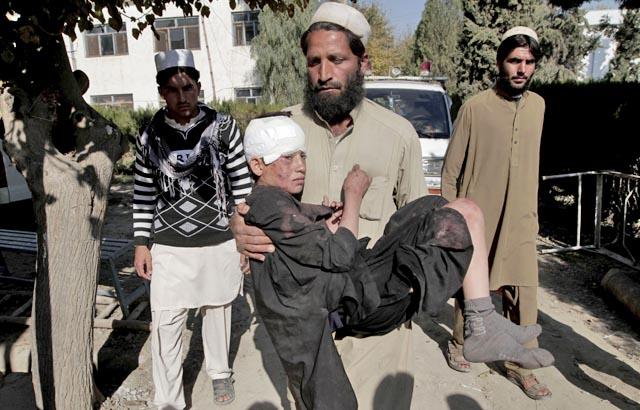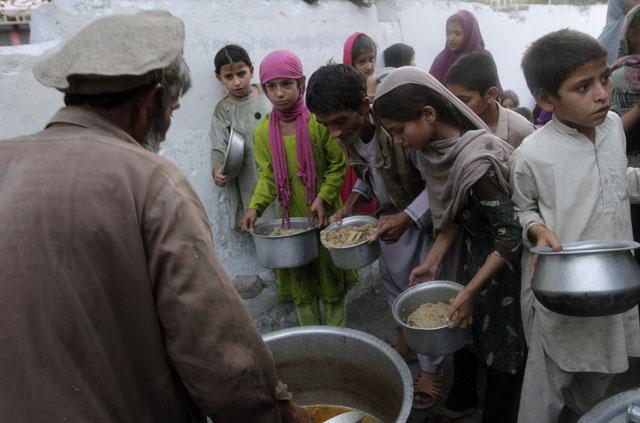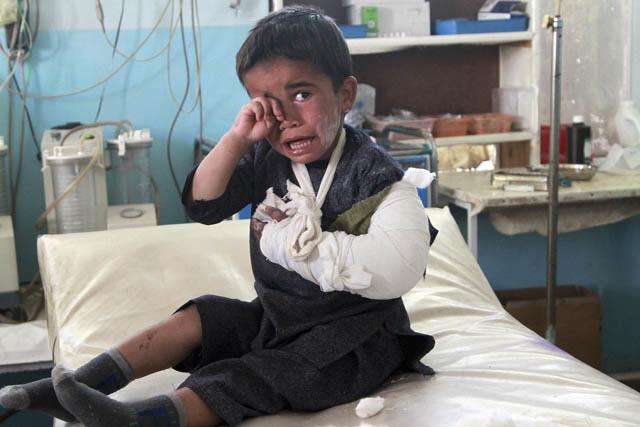KABUL — The number of civilians killed and wounded in Afghanistan rose 14 per cent last year, the UN said Saturday, as NATO troops draw down after more than a decade of war.
A total of 8,615 civilian casualties were recorded in 2013, with 2,959 killed and 5,656 wounded, according to the United Nations Assistance Mission in Afghanistan’s annual report.
The death toll almost reached the record of 2011, with UNAMA saying that civilians killed or wounded in the crossfire of fighting between government and Taliban-led insurgent forces marked a new trend last year.
UNAMA put this down to the reduction of ground and air operations by the US-led NATO force as it withdraws by the end of 2014.
Afghan forces have been taking an increasing role in the fight against the Taliban as the coalition pulls out.
More than 50,000 NATO-led combat troops who are still in Afghanistan are due to leave by the year-end.
Last year also marked the highest casualties for women and children with a 36 per cent increase in women and 34 per cent increase in children’s casualties, the report added.
Most of the casualties to women and children were caused by “ground engagements” and improvised explosive devices (IEDs), the Taliban’s weapon of choice.
The total rise in deaths, up 7 per cent from 2012, and injuries, up 17 per cent, reverses the decline recorded the previous year.
“The trend has been reversed in comparison to what we were telling here last year,” Jan Kubis, the UN envoy in Afghanistan, told reporters.
“In 2012, we were very happy to report the decrease, not anymore, unfortunately.”
The death toll almost matches the peak figure of 3,133 recorded in 2011. The conflict has claimed the lives of 14,064 civilians in the past five years.
UNAMA attributed the vast majority — 74 per cent — of civilian deaths and injuries to “anti-government elements” led by the Taliban.
The Afghan interior ministry in a statement accused insurgents of using civilians as “human shields” and of “deliberately targeting” them.
Taliban spokesman Zabiullah Mujahid said the report was “biased” and blamed Western forces for civilian casualties.
Caught in the crossfire
The number of civilians killed or wounded in crossfire during ground battles rose 43 per cent on 2012, with 534 dead and 1,793 wounded.
UNAMA said the new trend reflects the “changing dynamics of the conflict” as NATO handed over security duties to the Afghans.
“The fifth and final transfer of security responsibility from international military forces to Afghan security forces began in June 2013 and left security gaps in some areas that Afghan forces had not yet filled,” the report said.
“As a result, certain areas were vulnerable to attack by anti-government elements which often led to civilian casualties.”
Only Taliban IEDs caused more civilian casualties than crossfire, the report said.
The trend highlights the challenges faced by local forces as their better-equipped foreign partners leave, and comes as Washington and Kabul squabble over a proposed security deal that would allow some US forces to stay on beyond 2014.
Washington is proposing that 5,000 to 10,000 US soldiers are deployed from 2015 to train and assist Afghan security forces in their battle against the Taliban militants.
But President Hamid Karzai has said that before he signs the so-called Bilateral Security Agreement (BSA), the US must stop military operations and bring the Taliban to the negotiating table.
Local forces
Karzai, who has ruled the country since the fall of the Taliban in 2001, has suggested that a decision on whether to sign the BSA would fall to his successor, to be chosen in elections due on April 5.
The Taliban have threatened to target the campaign, and the Afghan police and army face a major challenge with little support from the dwindling number of NATO troops.
UNAMA recorded 25 attacks on election workers and facilities in 2013, resulting in four civilian deaths.
“Current risk assessments indicate that insecurity will impact participation of civilians in the 2014 elections in some areas,” the report said.
Atiqullah Amarkhil, a former army officer, said a lack of air support in Afghanistan’s military means more ground operations that cause civilian deaths.
It “ultimately means more bloody engagements between Afghan security forces who lack an effective air power and the insurgents”, in the coming years, he said.
An International Security Assistance Force statement said: “Throughout 2014, we will work with our Afghan partners to ensure we continue to take all actions necessary to reduce civilian casualties.”
The UNAMA paper also voiced concern at what it called “verified reports” of rights violations by Afghan national security forces.
It reiterated longstanding concerns about the Afghan Local Police (ALP), branded by critics as a thuggish militia.
The report said civilian casualties attributed to the ALP tripled from 2012 to 121 — 32 killed and 89 wounded.
It said most of these came from ALP members carrying out “summary executions, punishments and revenge actions”.















